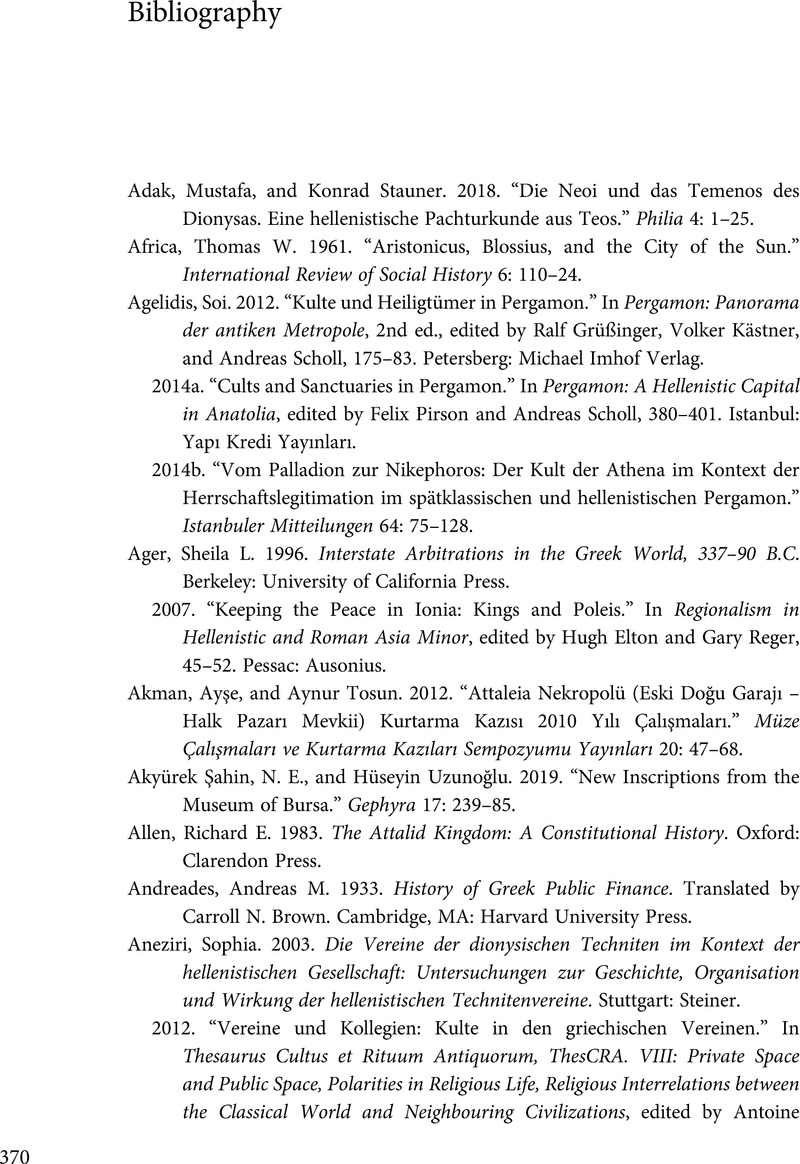Book contents
- The Attalids of Pergamon and Anatolia
- The Attalids of Pergamon and Anatolia
- Copyright page
- Dedication
- Contents
- Figures
- Graphs
- Maps
- Acknowledgments
- List of Abbreviations
- Introduction
- 1 Eating with the Tax Collectors
- 2 The Skeleton of the State
- 3 The King’s Money
- 4 Cities and Other Civic Organisms
- 5 Hastening to the Gymnasium
- 6 Pergamene Panhellenism
- Conclusion
- Appendix of Epigraphical Documents
- Bibliography
- Index Locorum
- Subject Index
- References
Bibliography
- The Attalids of Pergamon and Anatolia
- The Attalids of Pergamon and Anatolia
- Copyright page
- Dedication
- Contents
- Figures
- Graphs
- Maps
- Acknowledgments
- List of Abbreviations
- Introduction
- 1 Eating with the Tax Collectors
- 2 The Skeleton of the State
- 3 The King’s Money
- 4 Cities and Other Civic Organisms
- 5 Hastening to the Gymnasium
- 6 Pergamene Panhellenism
- Conclusion
- Appendix of Epigraphical Documents
- Bibliography
- Index Locorum
- Subject Index
- References
Summary

- Type
- Chapter
- Information
- The Attalids of Pergamon and AnatoliaMoney, Culture, and State Power, pp. 370 - 424Publisher: Cambridge University PressPrint publication year: 2022



